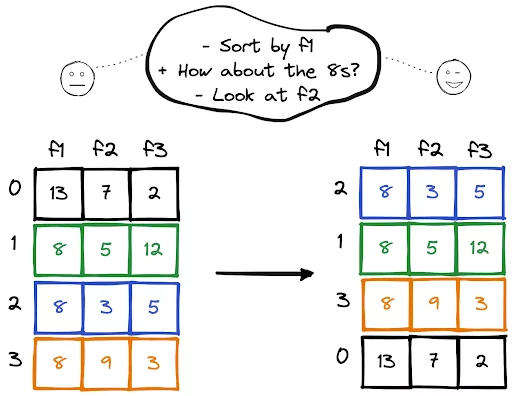
How to Build an End-To-End ML Pipeline With Databricks & Aporia
This tutorial will show you how to build a robust end-to-end ML pipeline with Databricks and Aporia. Here’s what you’ll...
Aporia has been acquired by Coralogix, instantly bringing AI security and reliability to thousands of enterprises | Read the announcement
In this short how-to article, we will learn how to sort DataFrame rows by two or more columns. Rows are sorted by the values in the first column. In the case of equality, the values in the second column are checked, and so on.

The sort_values function is used for sorting DataFrame rows. To sort by multiple columns, column names are written in a list.
df = df.sort_values(by=["A","B"])By default, the index of the rows prior to sorting are kept, which is not an ideal situation. We can change this behavior by using the ignore_index parameter.
df = df.sort_values(by=["A","B"], ignore_index=True)The PySpark equivalent of the sort_values function is orderBy. In the case of sorting by multiple columns, we write the column names in a list.
df = df.orderBy(["Date","Team"])
This tutorial will show you how to build a robust end-to-end ML pipeline with Databricks and Aporia. Here’s what you’ll...

Dictionary is a built-in data structure of Python, which consists of key-value pairs. In this short how-to article, we will...

A row in a DataFrame can be considered as an observation with several features that are represented by columns. We...

DataFrame is a two-dimensional data structure with labeled rows and columns. Row labels are also known as the index of...
DataFrames are great for data cleaning, analysis, and visualization. However, they cannot be used in storing or transferring data. Once...

In this short how-to article, we will learn how to sort the rows of a DataFrame by the value in...

In a column with categorical or distinct values, it is important to know the number of occurrences of each value....

NaN values are also called missing values and simply indicate the data we do not have. We do not like...